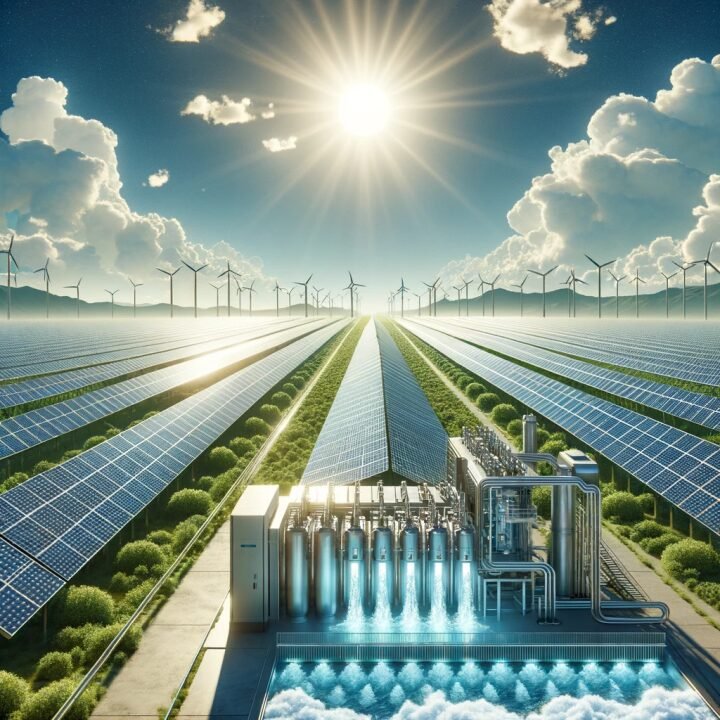In the ever-evolving landscape of solar energy, bifacial solar modules emerge as a beacon of innovation, offering a promising avenue to harness the sun’s power more efficiently. Unlike traditional solar panels, which capture sunlight from one side, bifacial modules are designed to absorb light from both their front and back sides, significantly increasing their energy yield. This article delves into the mechanics of bifacial modules, explores strategies to amplify their efficiency, including artificial albedo enhancement, and provides practical advice for their optimal use. Additionally, we spotlight Soleos Solar’s successful integration of bifacial technology, underscoring its role in achieving groundbreaking efficiency gains.
The Mechanics of Bifacial Solar Modules: Doubling Down on Solar Capture
Bifacial solar modules capitalize on the principle that sunlight is not only direct but also reflective. By absorbing light that bounces off the ground or surrounding surfaces onto the back side of the panel, these modules can generate more electricity than their monofacial counterparts. On average, bifacial modules can increase energy yield by 5% to 30%, depending on installation conditions and the reflectivity of the surrounding environment, known as albedo.

Boosting Efficiency with Artificial Albedo Enhancement
Albedo, or ground reflectivity, plays a crucial role in the performance of bifacial solar modules. Naturally reflective surfaces like snow or white gravel can significantly enhance the modules’ efficiency. However, not all environments are naturally equipped with high-albedo surfaces. Enter artificial albedo enhancement: a cost-effective strategy involving the application of reflective materials or coatings to the ground or mounting surfaces beneath the solar array. Simple solutions, such as white gravel or specialized reflective paints, can be employed without substantial investment, potentially boosting the albedo effect by up to 50%.
Achieving the Lowest Cost of Power with Bifacial Solar Modules
The quest for the lowest cost of power (LCoP) drives the solar industry’s innovation. Bifacial modules, with their superior energy generation capabilities, are at the forefront of this quest. To maximize their cost-efficiency:
- Optimize the installation angle and height to ensure the backside captures maximum reflected light.
- Consider the installation environment’s albedo and utilize artificial enhancements where necessary.
- Integrate tracking systems that adjust the panels’ orientation to follow the sun, further increasing energy capture by up to 35%.
Soleos Solar: Pioneering Efficiency with Bifacial Technology
Soleos Solar, a visionary in the renewable energy realm, began harnessing the power of bifacial modules in 2022. Through innovative approaches, including the creation of artificial albedo surfaces, Soleos has successfully achieved an 18% additional gain in energy production. This remarkable efficiency boost not only underscores the potential of bifacial technology but also exemplifies how strategic implementations can lead to significant advancements in solar energy utilization.
Dos and Don’ts for Bifacial Solar Module Implementation
Dos:
- Do consider the environmental albedo and employ artificial enhancements if needed.
- Do optimize installation parameters, such as tilt and height, for maximum light capture.
- Do incorporate solar tracking systems for an even greater efficiency boost.
Don’ts:
- Don’t overlook the importance of site selection; shaded or low-albedo sites can diminish the benefits of bifacial technology.
- Don’t neglect the maintenance of reflective surfaces; cleanliness and integrity are key to maintaining high albedo.
- Don’t underestimate the importance of professional installation; proper alignment and secure mounting are crucial for optimal performance.
Conclusion
Bifacial solar modules represent a significant leap forward in the quest for more efficient, cost-effective solar energy solutions. By effectively harnessing both direct and reflected sunlight, these modules offer the promise of a brighter, more sustainable future. Soleos Solar’s pioneering work with bifacial technology and artificial albedo enhancement exemplifies the innovative spirit driving the solar industry forward. As we continue to explore and refine these technologies, the potential for solar energy to power our world grows ever more luminous.
Contact us today at +91-8320095024 or visit www.soleosenergy.com to learn more about future of solar energy in India. Feel free to reach out with any questions or to start your solar journey!

Be part of this solar transformation. Pledge your commitment today to Solarize Bharat through Soleos Solar Energy Pvt. Ltd.. Let’s power our nation sustainably and equitably through homegrown, future-oriented solutions. The future is bright and solar!
Stay solar-powered and environmentally inspired!
P.S.: Share this blog with fellow solar enthusiasts to spread the word about the exciting world of solar energy!


